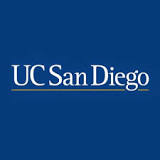The Role of Osteopathic Manipulation in the the Management of Post-traumatic Migraine
| Status: | Enrolling by invitation |
|---|---|
| Conditions: | Migraine Headaches, Migraine Headaches |
| Therapuetic Areas: | Neurology |
| Healthy: | No |
| Age Range: | 18 - Any |
| Updated: | 7/20/2018 |
| Start Date: | September 15, 2016 |
| End Date: | December 2019 |
This study evaluates the use of osteopathic manipulation (manual medicine) for migraine
headache following traumatic head injury. Headache is an important and very common somatic
complaint among people with traumatic brain injury and an important cause of disability in
the United States. Over 15-percent of soldiers deployed to Iraq sustained concussion. A
majority of these patients suffer from headaches. Many of these are classified as migraine
headache that do not respond to medications. Osteopathic manipulation is practiced by
physicians in the United States and has been shown to be beneficial in some migraine
patients. However, its use in the management of persistent post-traumatic headaches has not
been explored. The investigators will use a randomized cross-over design to evaluate
post-traumatic migraine patients' response to osteopathic manipulation.
headache following traumatic head injury. Headache is an important and very common somatic
complaint among people with traumatic brain injury and an important cause of disability in
the United States. Over 15-percent of soldiers deployed to Iraq sustained concussion. A
majority of these patients suffer from headaches. Many of these are classified as migraine
headache that do not respond to medications. Osteopathic manipulation is practiced by
physicians in the United States and has been shown to be beneficial in some migraine
patients. However, its use in the management of persistent post-traumatic headaches has not
been explored. The investigators will use a randomized cross-over design to evaluate
post-traumatic migraine patients' response to osteopathic manipulation.
This is a 30-week prospective, randomized delayed treatment control group design in which 20
participants from the community will be randomized 1:1 into (a) an immediate treatment group
that will receive 12 weeks of osteopathic manipulation (OMT) treatment plus standard of care
right away or (b) delayed treatment group that will receive 12 weeks of OMT plus standard of
care after a 6-week waiting period. The delayed treatment group initially serves as a control
condition but then receives the experimental treatment. The investigators selected this
control condition to improve our statistical power in this small pilot study. As noted, all
participants will continue to receive standard of care throughout the study as a washout is
not feasible with osteopathic manipulation and removing standard of care could exacerbate the
participant's symptoms. Participants in both arms will be followed for another 12 weeks after
the 12 weeks of OMT, resulting in 24 weeks of study participation for the immediate treatment
group and 30 weeks of study participation for the delayed treatment group, with participants
in both arms answering a series of questionnaires to evaluate migraine frequency and impact,
treatment efficacy, side effects, adherence t standard of care and depressive symptoms every
6 weeks throughout their study participation. Participant encounters will consist of
screening, psychometric and functional scale administration at every 6 weeks for a total of
24-30 weeks, as well as 12 weeks of OMT treatments for participants in both study arms. Study
participants will likely come from UCSD internal referrals.
participants from the community will be randomized 1:1 into (a) an immediate treatment group
that will receive 12 weeks of osteopathic manipulation (OMT) treatment plus standard of care
right away or (b) delayed treatment group that will receive 12 weeks of OMT plus standard of
care after a 6-week waiting period. The delayed treatment group initially serves as a control
condition but then receives the experimental treatment. The investigators selected this
control condition to improve our statistical power in this small pilot study. As noted, all
participants will continue to receive standard of care throughout the study as a washout is
not feasible with osteopathic manipulation and removing standard of care could exacerbate the
participant's symptoms. Participants in both arms will be followed for another 12 weeks after
the 12 weeks of OMT, resulting in 24 weeks of study participation for the immediate treatment
group and 30 weeks of study participation for the delayed treatment group, with participants
in both arms answering a series of questionnaires to evaluate migraine frequency and impact,
treatment efficacy, side effects, adherence t standard of care and depressive symptoms every
6 weeks throughout their study participation. Participant encounters will consist of
screening, psychometric and functional scale administration at every 6 weeks for a total of
24-30 weeks, as well as 12 weeks of OMT treatments for participants in both study arms. Study
participants will likely come from UCSD internal referrals.
Inclusion Criteria:
- History of TBI, concussion, post-concussive syndrome
- Headache frequency >/equal 4 per month
- Post-traumatic headache, migraine type
- MIDAS Grade I-IV
- Headaches continue to occur 3 months to 1 year after the injury
- No history of uncontrolled migraine prior to head injury
Exclusion Criteria:
- Headache medication change (Tricyclic antidepressant, antiepileptic medication,
propranolol, verapamil, duloxetine, butterbur, Botox) within 30 days
- Non-pharmacologic headache management change (reduction in caffeine intake, reduction
in alcohol intake, sleep hygiene, exercise) within 30 days
- Less than 3 months from injury
- History of uncontrolled migraine prior to TBI
- Currently taking oral anti-coagulants
We found this trial at
1
site
The University of California, San Diego UC San Diego is an academic powerhouse and economic...
Click here to add this to my saved trials
